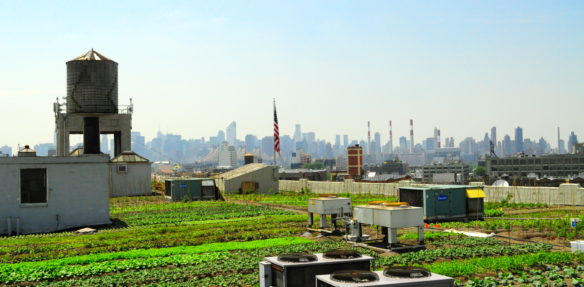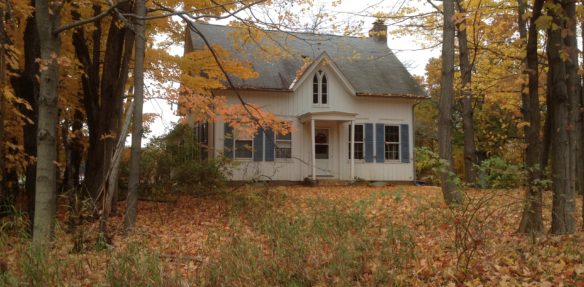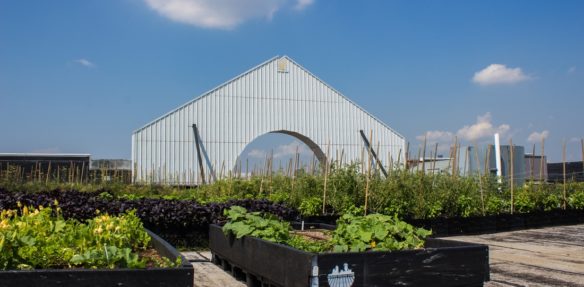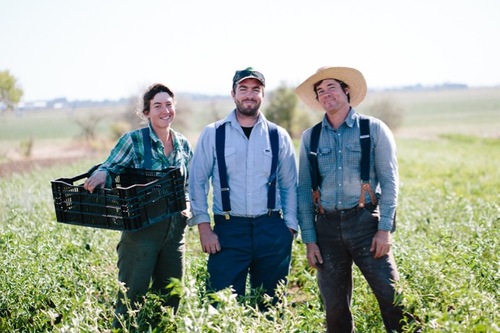
“As a culture, we need to have a conversation about what value food plays in our lives. Not only are we physically comprised of the food that we eat, but that food also plays a central role in the significance of our lives. Our best family and social moments – weddings, holidays, parties and celebrations – are all centered around food and the sharing of a meal."
– Chris Hay
How It Began
 Chris Hay grew up in the San Francisco Bay area and earned a degree in philosophy from UC Berkeley before starting his career in organic farming. Chris and his mother Sarah founded Say Hay Farms in 2010 on 2.5 acres of land with 100 hens. Seven years and several leases later, Chris is the owner of Say Hay Farms in Esparto, Yolo County, California. Chris runs an organic mixed vegetable and poultry farm that supports CSAs in the Sacramento Valley and San Francisco Bay Area and that also sells to farmers markets, independent grocers, and restaurants. His operation consists of 50+ acres used to grow vegetable crops, pastured hens, and cover crops and includes a 4-acre almond orchard and 1 acre of oranges.
Chris Hay grew up in the San Francisco Bay area and earned a degree in philosophy from UC Berkeley before starting his career in organic farming. Chris and his mother Sarah founded Say Hay Farms in 2010 on 2.5 acres of land with 100 hens. Seven years and several leases later, Chris is the owner of Say Hay Farms in Esparto, Yolo County, California. Chris runs an organic mixed vegetable and poultry farm that supports CSAs in the Sacramento Valley and San Francisco Bay Area and that also sells to farmers markets, independent grocers, and restaurants. His operation consists of 50+ acres used to grow vegetable crops, pastured hens, and cover crops and includes a 4-acre almond orchard and 1 acre of oranges.
The Say Hay Farms acreage is split between several farm parcels in Yolo County, and includes 36 acres on a 34-year lease (with Pat Meade and Jon Robbins) and 18 acres on a separate 34-year lease (with a different landowner).
Best Leasing Practices for Growing an Operation
Chris initially began farming in 2010 with a two-year lease on a small parcel of land (the 2.5 acres he farmed with his mother). Chris found that starting small and testing the waters – both with relationships with landlords and with his fledgling farm – was helpful in terms of building his business.
In 2012, Chris was ready to expand operations beyond 2.5 acres and ended up with a one-year lease situation on 15 acres in 2012. Later, in 2013, he entered into another one-year lease on a different 15-acre Yolo County parcel.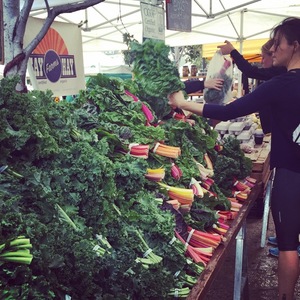
Chris also began leasing a ½ acre of citrus from Pat Meade and Jon Robbins in 2012, when their existing citrus farmer tenant left unexpectedly. Chris thought that citrus would look great in CSA boxes, and initially signed a rolling five-year lease with Pat and Jon starting on August 1, 2010, and ending on July 31 of each year for up to five years. While cultivating the ½ acre of citrus, Chris put a cover crop on the rest of Pat and Jon’s 36 acres.
Also in 2012, Chris began consulting with California FarmLink, an organization whose mission “is to link independent farmers and ranchers to the land and financing they need for a sustainable future.” California FarmLink helps farmers draft and negotiate leases, and works closely with the Stanford Law Clinic and other seasoned attorneys to develop unique lease clauses based on the needs they encounter with farm clients. California FarmLink eventually helped Chris negotiate two different 34-year leases for two different plots of land in Yolo County.
The 34-Year Lease With Pat Meade and Jon Robbins
Liya Schwartzman, California FarmLink’s Central Valley Program Coordinator, assisted Chris with a tailored 34-year lease with Pat Meade and Jon Robbins for 36 acres in Yolo County with an option to purchase. The lease was carefully drafted over the course of a year and a half to capture Chris’s unique relationship with the landlords and the property.
The retired landowners who own the Yolo County 36 acres – Pat and Jon – have become like family to Chris. The following lease provisions reflect the parties’ close relationship and years of open and honest dialogue about the parties’ hopes and intentions for the property.
Term (Length) of the Lease
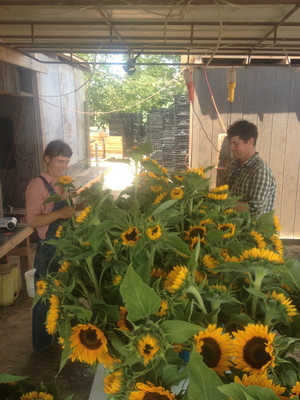 The parties agreed on a 34-year lease because 1) California law provides that the maximum term of any lease may not exceed 50 years and 2) for long-term leases exceeding 35 years, property taxes are reassessed at year 35. The property contains three farmhouses, and the parties were concerned about keeping the property affordable for Chris and keeping options open in the future if Chris wants to convert one farmhouse into farmworker housing. In addition, although Chris’s mother currently lives off site, the parties wanted to ensure that housing could be affordable and available in the event she ever wants to join Chris on the property.
The parties agreed on a 34-year lease because 1) California law provides that the maximum term of any lease may not exceed 50 years and 2) for long-term leases exceeding 35 years, property taxes are reassessed at year 35. The property contains three farmhouses, and the parties were concerned about keeping the property affordable for Chris and keeping options open in the future if Chris wants to convert one farmhouse into farmworker housing. In addition, although Chris’s mother currently lives off site, the parties wanted to ensure that housing could be affordable and available in the event she ever wants to join Chris on the property.
The Option to Purchase
Chris’s lease contains an option to purchase the leased property (all 50 acres). The option to purchase is triggered only upon: 1) the death of both of the landowners; or 2) both landowners leaving the property. Limiting the option with this type of trigger ensures that the retiring senior farmers can remain on the property for as long as they wish. When crafting an option to purchase within an agreement, the loan team and financial advisors at California FarmLink work with the client to create a cash flow projection so that the option to purchase reflects a reasonable timeline to allow the farmer space to save funds for the purchase.
Rent
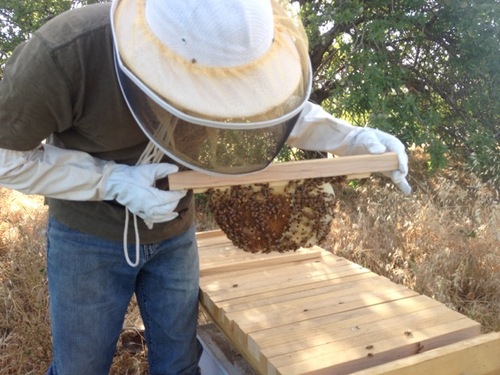 Under the lease, Chris has access to 36 acres of the 50-acre property (30 farmable acres and 6 acres with a house, barn, parking area, etc.). However, due to Chris’s significant investment in the property (discussed below), Chris pays no rent for the use of the 30 farmable acres as of January 2018, three years after the lease began. Liya notes that because Chris will be making a significant investment in Pat and Jon’s property, it made sense to make rent payments ramp up over the years.
Under the lease, Chris has access to 36 acres of the 50-acre property (30 farmable acres and 6 acres with a house, barn, parking area, etc.). However, due to Chris’s significant investment in the property (discussed below), Chris pays no rent for the use of the 30 farmable acres as of January 2018, three years after the lease began. Liya notes that because Chris will be making a significant investment in Pat and Jon’s property, it made sense to make rent payments ramp up over the years.
Chris’s lease provides for renegotiation of rent at 10 year intervals to ensure that the arrangement and rental terms remain equitable for all parties (especially if land values and property taxes change). Other lease term changes can be negotiated at the 10-year marks, provided that the parties agree to the changes and put the changes in writing. Chris’s long-term lease also contains a clause which provides that if property taxes increase by 20 percent from the most recent year the property was not occupied by the Tenant, Chris is responsible for the difference.
Furthermore, Chris’s lease separated out residential payments from farmland rental payments. Chris agreed to pay $700 per month until June 2016 or until he was able to sell his residential property. In June 2016 or upon the sale of his property, the residential rent increases to $1,400 per month. Starting in January 2017, Chris also agreed to pay a separate rent amount for use of the barn ($400/month), but that amount does not increase during the lease term.
The Tenant Reimbursement for Capital Improvements Clause
Given his relationship with landlords Pat and Jon, the 34-year lease term, and his option to purchase, Chris feels comfortable investing in the property as if he owned it (to the tune of over $150,000). Chris invested in digging a new well, putting in a pump and a filter, and in new irrigation infrastructure. Additionally, Chris completely renovated the barn on the property. He poured a new slab, put in a kitchen, a walk-in cooler, and solar panels.
The parties wanted to use the lease to make sure that Chris’s investments would be protected if his eventual option to purchase does not work out for some reason. One way to do that is via a “Tenant Reimbursement for Capital Improvements” clause. Under this type of clause, the basic idea is that if a lease situation doesn’t work out, the landlord will reimburse a tenant who makes capital improvements (e.g., building or renovating a structure) for the cost of those capital improvements. This is usually fair because the use and value of those capital improvements stay with the property, and because the landlord would generally receive much of the value of those improvements if the landlord eventually sold the property.
This type of clause can become a bit complicated, though, because capital improvements generally begin to lose value (depreciate) soon after they are built. So, in Chris’s situation, Pat and Jon agreed to reimburse Chris at the time of lease termination for the amount of useful life left in the capital improvements (calculated by subtracting depreciation from the initial cost). Under that arrangement, Chris wouldn’t lose his entire investment of $150,000+ if the lease were terminated early.
However, Pat and Jon are also protected to some extent under the lease because it provides that if the lease is terminated prior to January 2018, Pat and Jon get to depreciate the capital improvements by at least three years – regardless of whether three years have passed or not. That helps relieve Pat and Jon from being on the hook for immediately paying Chris the full value of his investment in the property should Chris walk away from the lease in the very early years.
Liya notes that a Tenant Reimbursement for Capital Improvements clause should be thoughtfully drafted for each individual farming situation and take into consideration state laws and tax implications. Her general advice is that “there must be a level of trust in the relationship of landlord and tenant and a reasonable expectation of the farmer’s success.” Additionally, a good rule of thumb is that the more expensive the tenant’s permanent capital improvements, the longer the lease term should be. While Tenant Reimbursement for Capital Improvements clauses can be used for shorter-term leases, Liya advises that the level of investment should match timeline of lease.
For brand new farmers, Liya recommends creating a short-term lease with an option to renew. Taking a different approach depending on the skill and experience level of the farmer is a way to avoid having farmers “bite off more than they can chew. We need to balance risk for the landowner and risk for the farmer.”
Zoning-Related Clause
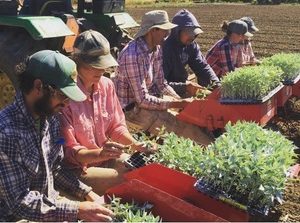 The lease has a clause that allows for the operation of a CSA on the property that complies with the current county zoning requirements for direct marketing on the farm.
The lease has a clause that allows for the operation of a CSA on the property that complies with the current county zoning requirements for direct marketing on the farm.
Organic Protection Clause
When Chris first started farming the property, he put in cover crops and transitioned the farm to organic practices. This clause protects the property’s organic certification and forbids the landlords from taking any action that would jeopardize the organic certification. California FarmLink notes that such a clause can cut both ways – if senior farmers are concerned about environmental stewardship or have an existing organic certification they want maintained, they can insert such a clause and forbid the tenant from taking any action that would jeopardize organic certification.
Responsibility for Visitors Clause
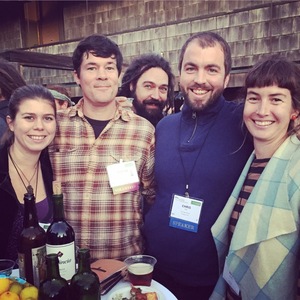 Chris wanted to allow for the occasional farm dinner or CSA party on the farm. This clause allows Chris to host dinners and education events for up to 500 people at a time. Chris must provide the landlords with 48 hours’ notice for any events with more than 50 participants. The clause also provides that the tenant bears responsibility for visitors and must ensure compliance with all zoning, licensing, and liability laws. Chris must ensure that everyone who attends such an event on the farm signs a liability waiver.
Chris wanted to allow for the occasional farm dinner or CSA party on the farm. This clause allows Chris to host dinners and education events for up to 500 people at a time. Chris must provide the landlords with 48 hours’ notice for any events with more than 50 participants. The clause also provides that the tenant bears responsibility for visitors and must ensure compliance with all zoning, licensing, and liability laws. Chris must ensure that everyone who attends such an event on the farm signs a liability waiver.
Respect for Neighbors Clause
Liya calls this clause “a great conversation piece” and further states, “managing expectations and open communication are essential for a successful relationship.” Chris’s clause, for example, specifies the hours during which heavy machinery can be used.
Exit Clauses
Chris’s lease contains an exit clause that allows him to terminate the agreement at any time, for any reason, so long as he provides a certain number of days’ notice. The lease may also terminate upon mutual decision of the tenant and the landowner. Importantly for Chris’s location in drought-ridden California, the lease allows Chris to terminate if a lack of water prevents him from successfully engaging in his farming operation.
Chris’ Hopes for the Future
Chris hopes to be able continue his relationship with Pat and Jon and with the land.
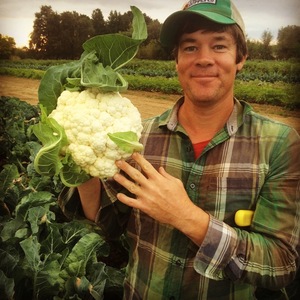 Chris also has a separate long-term lease (also 34 years long) with a right of first refusal (not an option to purchase) in a nearby area of Yolo County. That lease also requires Chris to maintain organic certification on the property, gives Chris access to the landlord’s equipment with the understanding that Chris will maintain and repair equipment as necessary, and allows Chris to terminate the agreement with 60 days’ written notice for any reason and with 30 days’ written notice if water quality or availability becomes an issue. Additionally, this lease has a well failure clause which establishes that the landowner will pay up to a certain amount to repair or replace the well, but if the cost exceeds that amount Chris can either pay the remainder or decide to leave the property. Chris hopes to eventually purchase that property as well as he continues growing his operation.
Chris also has a separate long-term lease (also 34 years long) with a right of first refusal (not an option to purchase) in a nearby area of Yolo County. That lease also requires Chris to maintain organic certification on the property, gives Chris access to the landlord’s equipment with the understanding that Chris will maintain and repair equipment as necessary, and allows Chris to terminate the agreement with 60 days’ written notice for any reason and with 30 days’ written notice if water quality or availability becomes an issue. Additionally, this lease has a well failure clause which establishes that the landowner will pay up to a certain amount to repair or replace the well, but if the cost exceeds that amount Chris can either pay the remainder or decide to leave the property. Chris hopes to eventually purchase that property as well as he continues growing his operation.
Words of Wisdom for New Farmers
Reflecting on his own situation, Chris advises other farmers, “Take your time. Start off slow before entering into a long-term lease. Don’t rush the negotiation process – the negotiation process itself can be as important as the signed document.” He believes it is crucial that everyone understand each other’s vision for the property and that the ultimate agreement contain flexibility for fielding life’s inevitable curveballs.
California FarmLink similarly recommends that new farmers start with shorter-term leases, and to hold off investing in permanent infrastructure until securing longer-term tenure. Liya advises new farmers to start with one- to three-year leases to gain an opportunity to learn about the property, the landowner, and themselves as new entrepreneurs. Although Liya advocates for farmers working towards longer-term lease or ownership situations, with shorter-term leases, Liya recommends new farmers “make sure everything has wheels under it” before they drive off into a lengthier tenure situation.
“Make sure everything has wheels under it.”
-Liya Schwartzman
 Liya also notes that a long-term lease with an option to purchase is a unique situation and is only recommended where there are strong relationships between the parties or with family members.
Liya also notes that a long-term lease with an option to purchase is a unique situation and is only recommended where there are strong relationships between the parties or with family members.
Another option for a long-term leasing arrangement is a crop share. Again, such an arrangement requires a high level of trust between the landowners and the tenants and is not recommended for shorter-term leases (i.e. anything less than three years).
California FarmLink also recommends that all new farmers work with service providers such as CA FarmLink and/or attorneys in order to draft the best possible lease for all parties involved. Liya advises against farmers using lease templates from the internet because many templates contain clauses that are not applicable, exclude clauses that should be addressed, or contain boilerplate cut-and-pasted clauses that may unintentionally contradict each other.
Working with service providers and attorneys can help farmers include necessary clauses tailored to their specific leasing needs without any extra language – the end result being a clear lease. As Liya likes to tell the farmers she works with, “a clear lease is a good lease.”
“A clear lease is a good lease.”
-Liya Schwartzman
